First ride: Aprilia Tuono V4 1100 Factory review
‘You open the throttle and realise nothing about the V4 Factory is remotely ordinary’
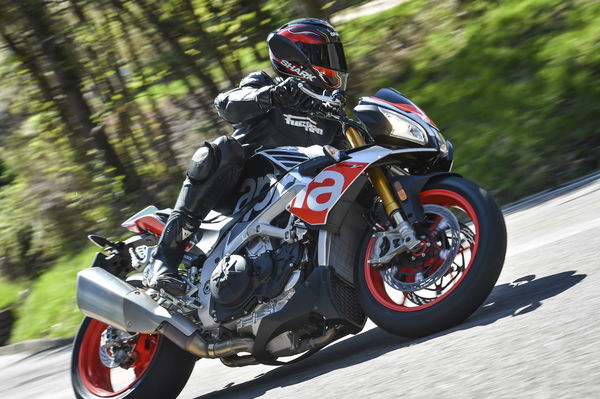
By Roland Brown
‘PITY the poor Aprilia engineer who has to try to improve this bike!’
That’s a strange thought to be flashing through my mind as I’m aiming the revamped Aprilia Tuono Factory down a twisty road in the Dolomite foothills of northern Italy. But the naked V4 seems so stunningly quick, agile, refined and generally close to perfection that anyone charged with improving it further will face one hell of a job.
This hasn’t always been the case. Aprilia’s hyper-naked headbanger has been touched by brilliance ever since 2011, when the Italian firm whipped off the RSV4’s full fairing and bolted on a flat handlebar to create the original 999cc V4R.
But back then, tweaking the Tuono was relatively easy. That original V4R combined stunning performance and state-of-the-art APRC electronics with a hard seat, tiny tank and darts player’s thirst in a way that seemed almost deliberately antisocial.
Updates including a new tank and seat sorted the most obvious shortcomings, and Aprilia didn’t stop there. By last year, the upmarket Tuono V4 1100 Factory featured a punched-out and even more powerful 1077cc, 175hp engine, Öhlins suspension and updated brakes and electronics.
And now the Tuono has been revised again. As before, it comes in two versions: the Öhlins-equipped Factory flagship (as tested) features an RSV4-style tailpiece and wears Supercorsa SPs. The RR has Sachs springs and steering damper, a more conventional dual-seat, and comes with harder-wearing Diablo Rosso III rubber as standard.
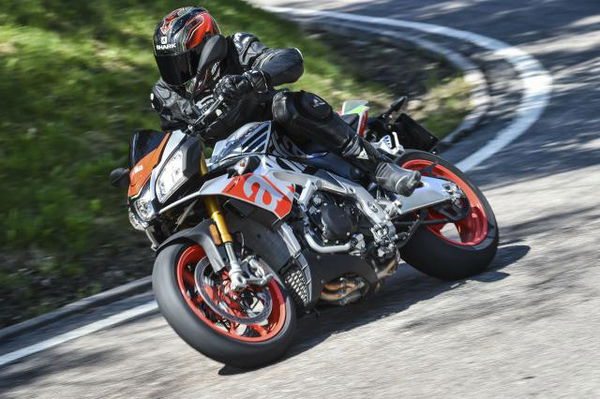
Both models use the same 1077cc V4 engine, which is reworked with DLC-coated piston pins and honed rods to reduce friction and help ease the Tuono through Euro4 emission limits, in conjunction with a new exhaust system and revised fuelling and cam timing. The new motor revs 500rpm higher but its vital statistics – peak power 175hp at 11,000rpm, maximum torque 89lbft at 9,000rpm – are unchanged.
So too are the rigid aluminium frame and swing-arm, but the Factory’s front end is revamped with Öhlins NIX30 forks that are slightly lighter in both spring rate and weight (by 800g).
More significantly the Brembo front brake system is comprehensively upgraded, its larger 330mm discs gripped by M50 Monobloc calipers (from M4.32s), operated via a radial master cylinder and equipped with Bosch cornering ABS.
The Tuono’s electronics have been state-of-the-art ever since the original V4R was launched six years ago with its then optional APRC (Aprilia Performance Ride Control) package of easily adjustable traction control, plus quick-shifter, wheelie control and launch control.
This latest model ups the stakes again, adopting Bosch’s 9.1 IMU to allow more sophisticated traction control – still adjustable on the move by paddles for left thumb and index finger – and cornering ABS. The left switch-gear also incorporates a new button for adjusting either wheelie control or the new cruise control, and another to engage the new pit-lane limiter.
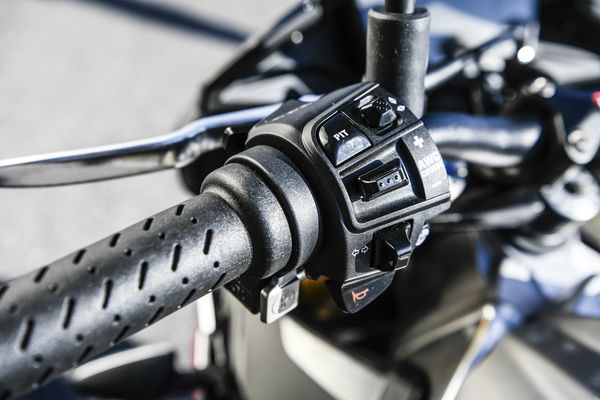
There’s also a new joy-stick with which to explore the new 4.3-inch full-colour instrument panel, which has alternative ‘Road’ and ‘Race’ layouts, plus day and night versions of each.
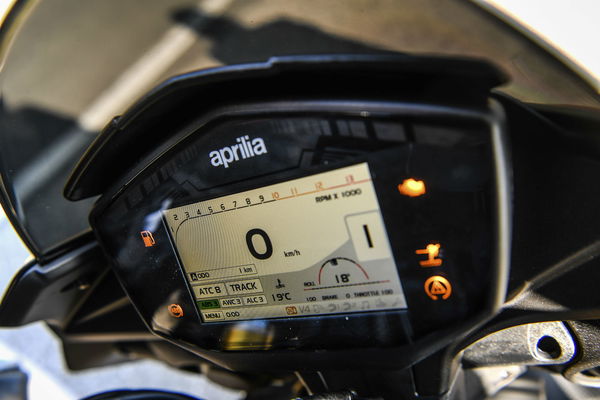
There’s a lean angle indicator within the digital speedo, a tacho bar and host of lights for the APRC functions, plus the three engine modes, which in Tuono style all give the full 175hp output and are titled Sport, Track and Race.
That might all sound complicated but the set-up is intuitive and simple. The bigger, more complex exhaust system required for Euro4 means the Tuono is 2.5kg heavier despite those lighter forks. But at 209kg with fuel it’s still very light, and felt slim and controllable as I set off from the launch base in Trento.
Almost immediately I was reminded that there’s something just magically right about the Tuono. At low speed it seems like a normal bike: conventional upright riding position; weight of a typical middleweight.
Then you open the throttle and instantly realise that nothing about the V4 1100 Factory is remotely ordinary.
That’s because it’s not only trying to rip your arms off, its gloriously smooth and strong acceleration made never-ending by the ultra-slick quick-shifter. It’s also producing a spine-tingling V4 moaning sound that is making the experience even more utterly addictive.
Better still, it’s doing all that while allowing you to pull as big or small a wheelie as you fancy, by flicking the left handlebar’s button to set anti-wheelie to one of three settings. Or you can turn it off, without affecting the traction control, which is equally easily adjusted through its own eight settings. Rival factories’ electronics engineers, please note.
Before long we stopped for photos, and at first I wasn’t particularly keen. The bend was smooth but fast and blind. For decent action pics we needed a knee on the ground, and we’d only get two runs in each direction.
It seemed slightly dicey, but I hadn’t bargained for how brilliantly the Factory handles. First time up, I pitched the Aprilia into the right-hander, its suspension giving flawless feedback from the front Supercorsa, and had time to tighten the turn slightly to generate a scritch of knee-slider before flashing past the photographer crouching in the verge.
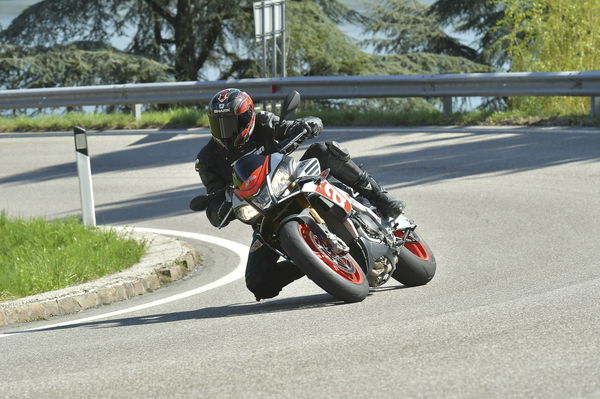
Few bikes would have felt so utterly poised and composed in the bend, or left more of a safety margin – since if there’d been an out-of-control Fiat heading the other way I could have grabbed a handful of front Brembo mid-turn and allowed the cornering ABS to bring the bike to a skid-free halt.
Initially I’d thought it a shame that Aprilia hadn’t given the Factory semi-active suspension, with its ability to be instantly fine-tuned from the saddle. But the Tuono’s blend of control and ride quality was such that the need for further complexity and expense seemed less clear.
Besides, it’s difficult to criticise Aprilia for a lack of electronics when the firm’s APRC set-up remains cutting-edge regarding both performance and usability. We didn’t need the pit-lane limiter or cruise control on a launch ride that included neither track nor motorway, but both are useful additions.
The same goes for the bi-directional quick-shifter, which allowed lightning-quick clutch-less changes, and worked flawlessly both up and down the box. Shame the superbly twisty launch route didn’t give much chance to use the higher ratios, or to test braking from near the Tuono’s 170mph-or-so top speed.
When needed the M50 Monoblocs were predictably ferocious, biting hard enough to lift the rear wheel in the ABS system’s most aggressive Race setting. The Road mode adds anti-stoppie function (or Rear wheel Lift-up Mitigation, as Aprilia call it) dependant on speed.
Even this most refined and safety-conscious Tuono is hardcore for road use. Its engine is still thirsty, and at £15,999 it’s far from cheap to buy. But those drawbacks apart, as a sporty naked bike the Factory is getting seriously close to perfection. I certainly don’t envy the engineer charged with making it better next time.
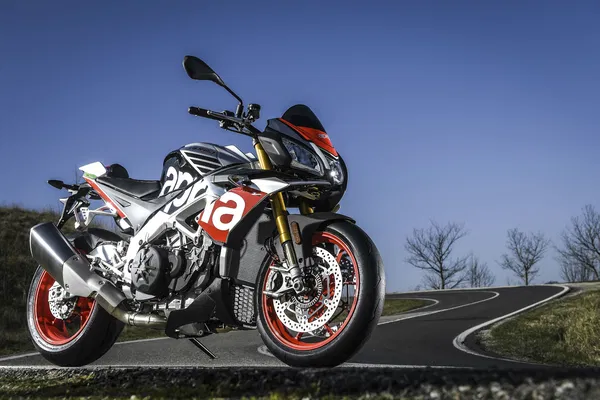
Model tested: 2017 Aprilia Tuono V4 1100 Factory
Price: £15,999 (Tuono V4 1100 RR £14,999)
Power: 175hp
Torque: 89lb.ft
Wet weight: 209kg
Tank capacity: 18.5 litres
Seat height: 825mm
Available: now











